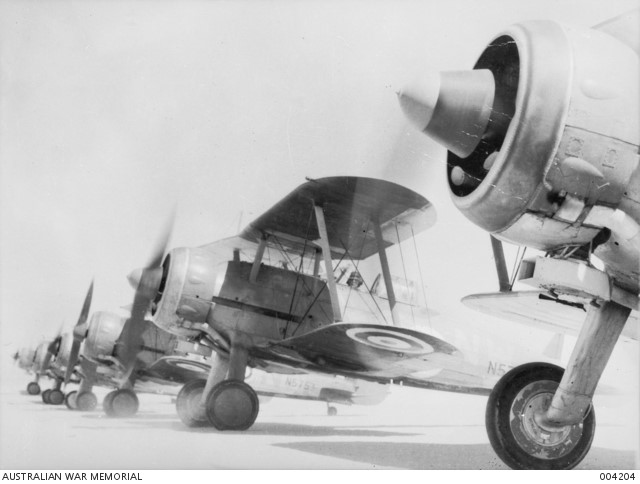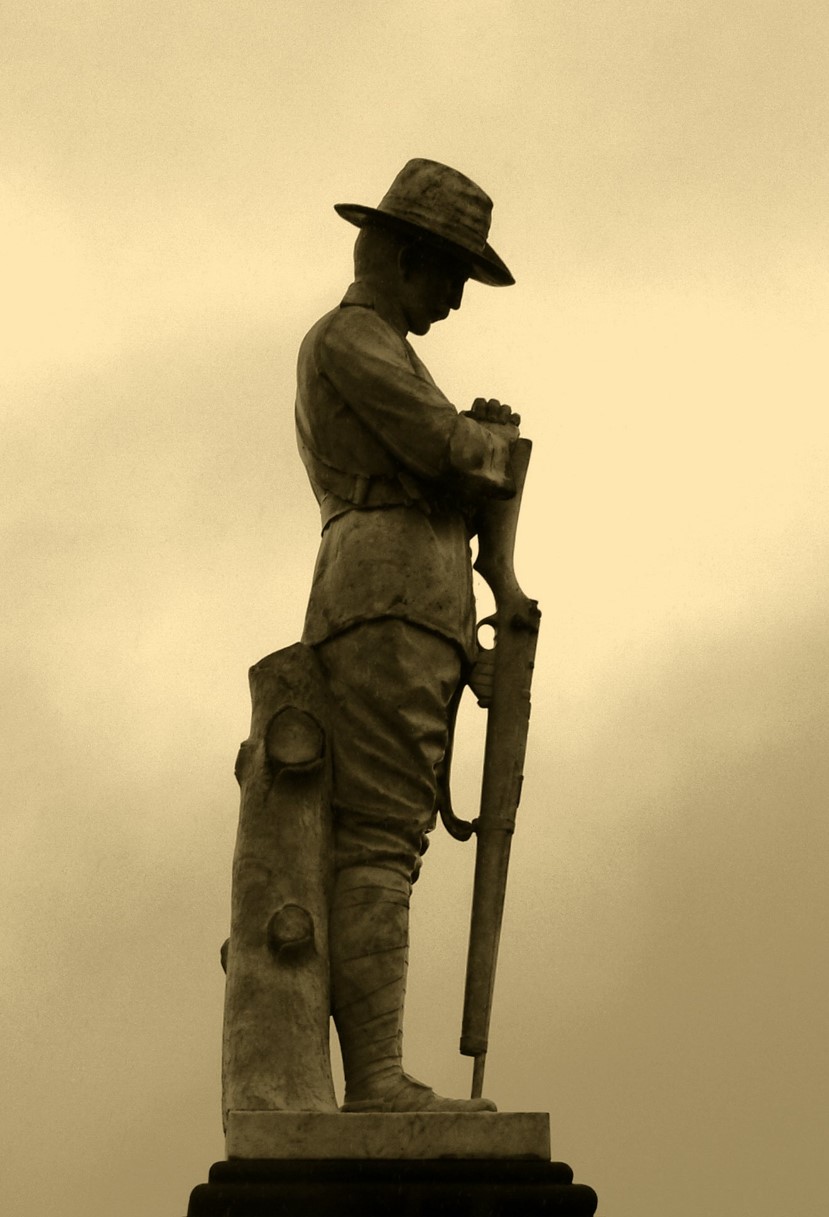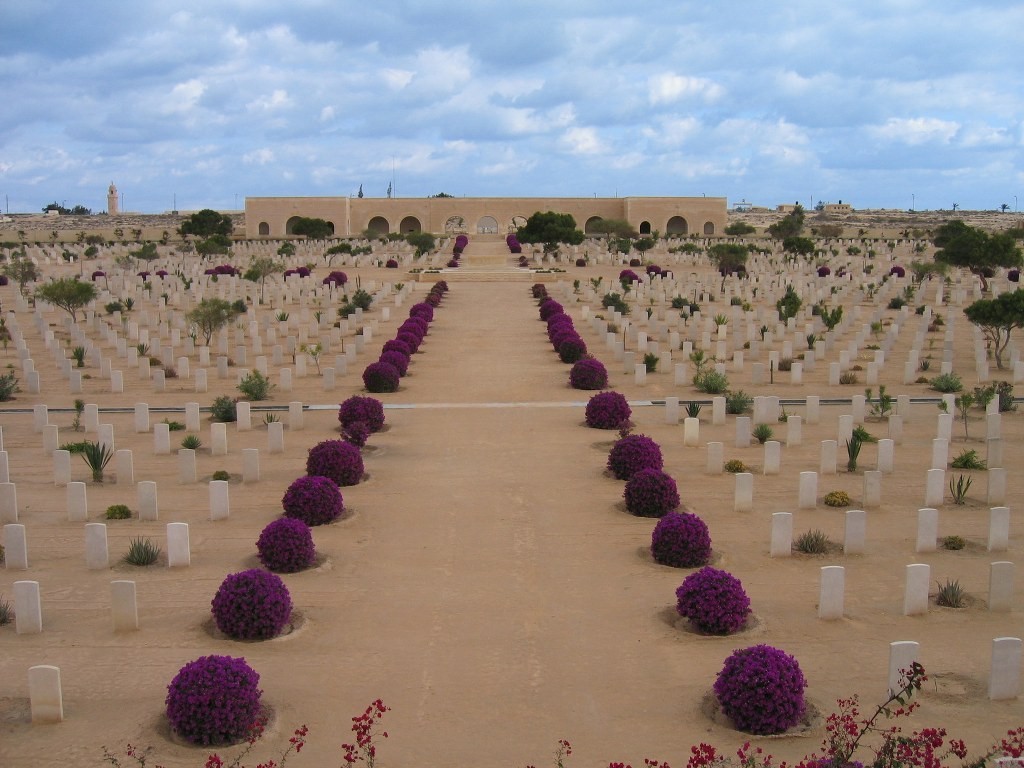Flying Officer James Chippindall Campbell, the son Forbes Campbell and Doris Campbell (Marriage record shows Robert Forbes Campbell and Dorothea Eugenie Helen Chippindall), was born at Charters Towers in Queensland on 22nd November 1918. He was educated at the Toowoomba Grammar School and Scots College, Warwick. He had served as a Sergeant in the Cadet Corps at Scots College during 1934. At the age of 21 years and 1 month he was enlisted as an Air Cadet into the Permanent Force of the Royal Australian Air Force at No. 2 Elementary Flying Training School at Archerfield in Queensland after swearing an oath of allegiance on 19th January 1940. At the time of enlistment he was unmarried and employed as a Journalist. His physical description at the time of enlistment was that he was 6 feet in height and weighed 147 pounds. He had a medium complexion, blue eyes and medium (sic) hair. He gave his next of kin as his father, Mr R.F. Campbell, c/- McPhee and Company, Toowoomba. He married on 29th June 1941 and his next of kin was shown as his wife, Mrs Ann Violet Cameron Campbell, c/- Travel Department, Bank of New South Wales, Melbourne. His wife’s address was later changed c/- Mrs White, 1 Meredith Street, Elwood.
Flying Officer James Campbell was allotted the service number of 634. He joined No. 2 Elementary Flying Training School at Linfield in New South Wales on 8th January 1940 and he completed his training there on 2nd March 1940. He then joined No. 21 Squadron at R.A.A.F. Station Laverton in Victoria 11th March 1940. He joined No. 1 Service Flying Training School at Point Cook in Victoria on 13th May 1940 and graduated as a pilot. He had been appointed as a Probationary Pilot Officer on 4th May 1940. He joined No. 25 Squadron at R.A.A.F. Station Pearce, West Australia for operational duty on 8th July 1940. No. 25 Squadron provided convoy protection and anti-submarine roles off the West Australia coast around Fremantle and Rottnest Island. He embarked for overseas service in the Middle East from Fremantle in Western Australia on 25th October 1940. He was promoted to the rank of Flying Officer on 4th November 1940. He joined No. 3 Squadron in the Middle East for operational duty on 27th November 1940. No. 3 Squadron operated obsolete Gloster Gladiator biplanes against Italian Air Force fighters which they encountered while conducting reconnaissance and ground attack operations. He joined T.U.R.P. (probably refers to the Reserve Pool) at Ismailia on 6th December 1940.
Flying Officer James Campbell was the Pilot of a No. 3 Squadron Royal Australian Air Force Gloster Gladiator IK8022 that was lost as a result of enemy action during air operations on 25th January 1941. He was on an offensive patrol of 4 Gladiator aircraft when attacked by 5 Fiat G50’s James Campbell was shot down and he was found dead in his aircraft by an Army unit. On 5th February 1941 his father was notified by telegram that James Campbell had lost his life and that his body had been buried. Subsequent information revealed that his aircraft had been shot down in combat with enemy fighters 2 miles of Segnali (Cyrenaica) at 0830 hours on 25th January 1941. James Campbell’s body was identified by his identity discs and personal papers and buried in a solitary grave 120 yards from the signpost at Segnali Cross Tracks by a Padre Joseph Gallagher.

Australian War Memorial photograph 004204
No. 3 Squadron R.A.A.F. Gloster Gladiator fighters at Helouan, Egypt.
The Commanding Officer of No. 3 Squadron Royal Australian Air Force provided the following report on the circumstances of James Campbell’s death:
On 25th January 1941, Flying Officer Campbell was flying in a formation of 4 Gladiators on protective fighter patrol over our forward troops in the Mechili area. They were attacked by 5 Fiat G50’s, and our formation was scattered. Nothing further was seen of Flying Officer Campbell by our own pilots but the following is an extract from a report received from Headquarters Support Group who were in the area:
“Flying Officer J.C. Campbell was killed in action on January 25. At about 0830 hours (0630 hours G.M.T.) his patrol of 4 Gladiators flew East over Support Group Headquarters at Segnali. They were followed a few minutes later by 5 G50’s who caught them up about 2 miles East of Segnali. In the fight which followed, one Gladiator was seen to be shot down. Flying Officer Campbell was already dead when we reached him. His Gladiator had dived into the ground and turned over. It did not catch fire. He was buried by the Padre at Segnali, 120 yards on a bearing of 217 degrees from the sign post at main 1 tracks”.
After the war Graves Registration Units attempted to retrieve the remains of men and women buried in isolated graves. Unfortunately the body of James Campbell was never located. A Department of Air Minute on 30th September 1946 stated:
The name of Flying Officer James Chippindall Campbell has been included on a list compiled by the Directorate of Graves Services, of members who cannot be located or who are considered lost in the minefields, by the graves registration units which have now completed operations in the Middle East area. Further search by the graves registration units has been abandoned.
Flying Officer James Campbell has no known grave, therefore his name is commemorated on the El Alamein Memorial to the missing. Flying Officer James Campbell, for his service during World War 2, had entitlement for the 1939/1945 Star, the Africa Star, the War Medal and the Australian Service Medal 1939/1945. His name is recorded on Panel No. 98 at the Australian War Memorial in Canberra and locally on the Toowoomba Grammar School World War 2 Honour Board.
Note
His wife also served in the Royal Australian Air Force during World War 2 as a Section Officer (service number 104047)
His wife subsequently remarried and in April 1951 she was shown as Mrs A. Quinn, c/- Married Quarters, R.A.A.F. Station, Amberley, Queensland.
Toowoomba Grammar Archives shows he was born on 22/11/19 not 1918. He enrolled as a boarder on 3rd February 1930 and left on 24th June 1932. His parent is shown as Robert Forbes Campbell, Charleville Primary Producers’ Cooperative. He left Toowoomba Grammar School to attend Scots College, Warwick. After leaving school he was employed as a Cadet Journalist. Whilst at TGS he represented the School in the Cricket XI.
Old Boys’ Register
Flying Officer James Chippindall (Jimmy) Campbell was killed in an air battle over Benghazi on January 25th. He was one of four pilots who engaged the enemy over Benghazi, and was flying a Gloster Gladiator single-seater fighter. He joined the R.A.A.F as an air cadet on January 8th, 1940, was commissioned a pilot officer in May and promoted flying officer six months later. He was the only son of Mr and Mrs R.S. Campbell of Toowoomba. He was born at Charters Towers 22 years ago and was at the School for some time. Then he went to Scots, Warwick. He joined the staff of the Brisbane “Courier-Mail” in 1936 and went to the Sydney “Daily Telegraph”18 months later. Within a short time he was promoted and became the latter newspaper’s Melbourne representative, being one of the youngest journalists in Australia to hold such a position. He married Miss A.C. V. Cormack in Melbourne on June 29th, and his wife went with him to Western Australia, where he was commissioned in a service squadron before he went to Egypt. To his wife and parents we extend the sympathy of the School and Old Boys.
Lew Jenkin of 16 Kawana Street, Amity Point, writing to the School on 12th March 1986 stated:
Jim Campbell was a cadet journalist in Sydney. He wrote a dramatic story when the ferry steamer “Rodney” capsized during the departure of the United States cruiser “Chicago.” Neville Cardus was impressed with his work and was going to train him on the “Manchester Guardian.” The war intervened and Jim lost his life in the RAAF during World War II.




